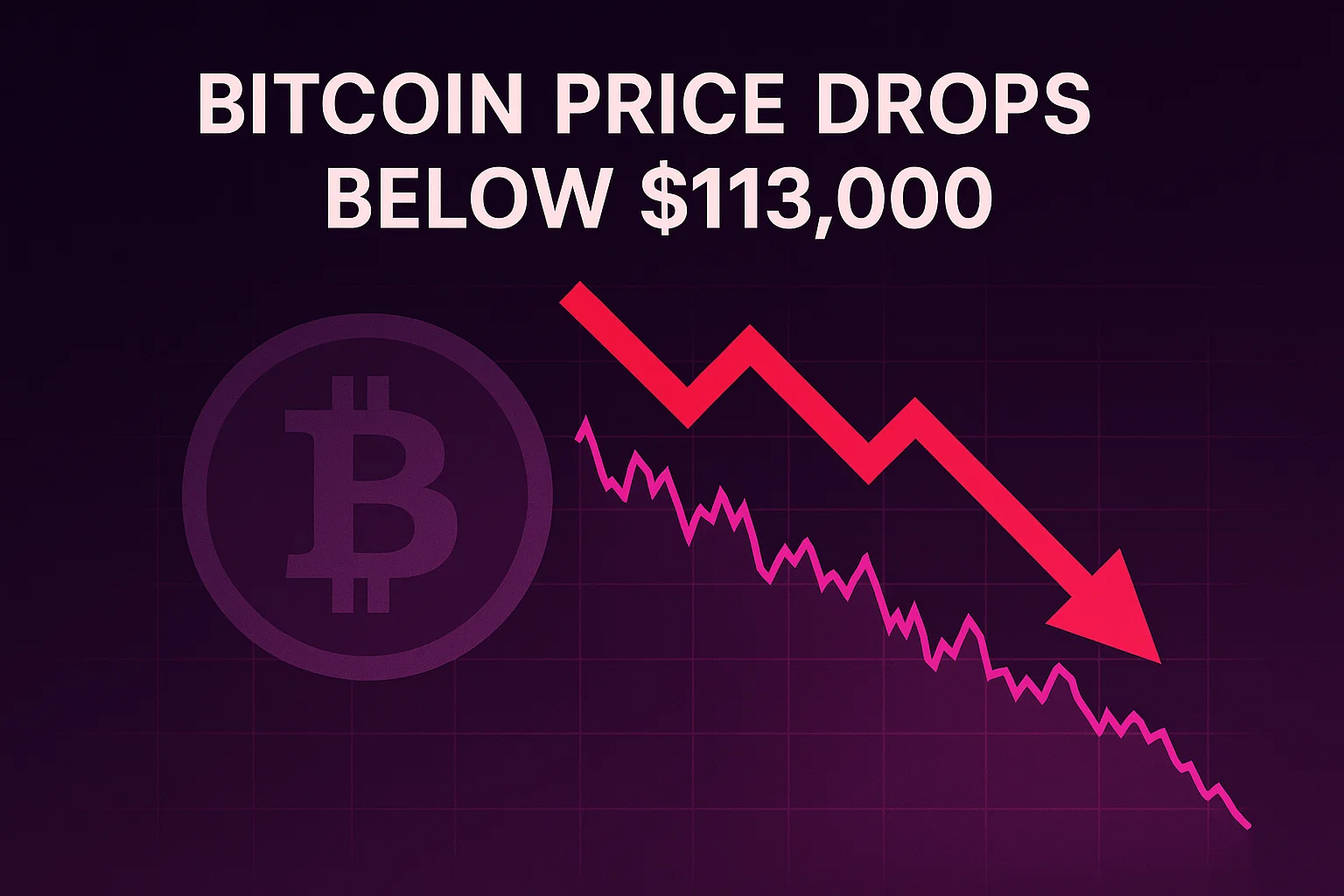Bitcoin price drops below the critical $113,000 threshold, prompting renowned veteran trader Peter Brandt to share his perspective on the digital asset’s future trajectory. As one of the most respected technical analysts in the trading community, Brandt’s insights carry substantial weight among investors navigating the turbulent crypto landscape. The recent price correction has sparked intense debate about whether this represents a temporary pullback or signals a more substantial market shift. With the Bitcoin price dropping below this psychological barrier, market participants are closely examining technical indicators, historical patterns, and expert opinions to make informed decisions. Understanding the implications of this price movement is crucial for both seasoned investors and newcomers to the cryptocurrency space.
Peter Brandt’s Bitcoin Price Analysis
Peter Brandt has built a legendary reputation over his four-decade career as a commodity trader and technical analyst. His expertise in classical charting techniques and pattern recognition has made him a trusted voice in financial markets, particularly within the cryptocurrency community. When Bitcoin price drops below significant levels, Brandt’s analysis typically focuses on long-term chart patterns, historical precedents, and market psychology.
Who Is Peter Brandt and Why His Opinion Matters
Peter Brandt entered the trading world in 1976 and has witnessed numerous market cycles across various asset classes. His transition to cryptocurrency analysis brought traditional technical analysis methodology to the digital asset space. Brandt’s approach combines:
Classical chart patterns that have proven reliable across decades of trading, Factor Analysis principles based on his extensive market experience, risk management strategies that prioritize capital preservation Long-term perspective that filters out short-term market noise
His Twitter following exceeds hundreds of thousands of traders who rely on his objective market assessments. Unlike many cryptocurrency influencers, Brandt maintains a balanced perspective, acknowledging both bullish and bearish scenarios based on technical evidence rather than emotional bias.
Brandt’s Technical Framework for Cryptocurrency Analysis
When examining situations where the Bitcoin price drops below key levels, Brandt employs several technical analysis tools:
Head and Shoulders Patterns: These reversal formations often signal potential trend changes when they appear on higher timeframes. Brandt has successfully identified these patterns in Bitcoin’s historical price action.
Parabolic Advance Analysis: Brandt frequently discusses parabolic price movements and their inevitable corrections. His framework suggests that assets experiencing parabolic rallies typically retrace 60-80% of their gains.
Log-Scale Charts: Unlike linear charts, logarithmic scaling provides a better perspective on Bitcoin’s long-term trajectory, accounting for its exponential growth nature.
Time Cycles: Brandt examines historical time patterns between major tops and bottoms to project potential future turning points.
Bitcoin Price Drops Below $113,000 – Market Context
The recent decline that saw Bitcoin price drop below the $113,000 mark didn’t occur in isolation. Multiple factors contributed to this significant price movement, creating a complex tapestry of market forces that traders must understand.
Macroeconomic Factors Influencing Bitcoin’s Decline
Federal Reserve Policy: Central bank monetary policy continues to exert tremendous influence on risk assets, including cryptocurrencies. Interest rate decisions, quantitative tightening measures, and inflation data releases all contribute to Bitcoin’s price volatility.
Dollar Strength Index: The U.S. Dollar’s performance inversely correlates with Bitcoin prices in many market conditions. A strengthening dollar often pressures cryptocurrency valuations as investors seek safe-haven assets.
Global Economic Uncertainty: Geopolitical tensions, banking sector instabilities, and recession fears create market conditions that impact investor risk appetite for speculative assets like Bitcoin.
Regulatory Developments: Government agencies worldwide continue establishing cryptocurrency regulations, and policy announcements can trigger significant market reactions.
Technical Indicators Preceding the Drop
Before Bitcoin’s price dropped below $113,000, several technical warning signs emerged:
Declining Trading Volume: Decreasing participation at higher price levels suggested weakening momentum and potential exhaustion of buying pressure.
Bearish Divergence: Oscillators like the Relative Strength Index (RSI) showed negative divergence, with price making higher highs while the indicator formed lower highs.
Support Level Breakdown: Bitcoin failed to maintain critical support zones that had previously held during minor corrections.
Moving Average Crosses: Death cross formations appeared on various timeframes as shorter-period moving averages crossed below longer-period ones.
Historical Precedents When Bitcoin Price Drops Below Major Levels
Bitcoin’s history provides valuable context for understanding current price action. Examining previous instances when Bitcoin price drops below significant psychological and technical levels reveals patterns that may repeat.
The 2021 Peak and Subsequent Correction
In November 2021, Bitcoin reached approximately $69,000 before entering a prolonged bear market. The correction that followed demonstrated several characteristics:
80% Drawdown: From peak to trough, Bitcoin declined roughly 80%, reaching lows around $15,500 in November 2022.
Extended Timeline: The complete cycle from top to bottom took approximately 12 months, teaching investors about the importance of patience during market recoveries.
Accumulation Phase: Following the bottom, Bitcoin entered an accumulation phase where prices consolidated for several months before beginning the next bull run.
Sentiment Extremes: Fear and Greed Index readings hit extreme fear levels at the bottom, creating optimal entry points for contrarian investors.
The 2017-2018 Cycle Comparison
The 2017 bull market culminated near $20,000, followed by a devastating 84% correction:
Parabolic Rise Warning: The vertical price action in late 2017 mirrored the characteristics Brandt warns about in parabolic advances.
Structural Support Breaks: When Bitcoin price drops below major support levels like the 200-week moving average, deeper corrections typically follow.
Recovery Timeline: Bitcoin required approximately three years to establish a new all-time high above $20,000.
Psychological Resistance: Previous all-time highs often act as significant resistance during recovery phases.
Peter Brandt’s Specific Predictions and Possibilities
Brandt has outlined several potential scenarios following the current situation where the Bitcoin price drops below $113,000. His analysis considers multiple outcomes rather than making singular predictions.
Bullish Scenario Analysis
Despite the correction, Brandt acknowledges possibilities for Bitcoin’s continued long-term appreciation:
Higher Low Formation: If Bitcoin establishes a higher low compared to previous corrections, the long-term uptrend remains intact.
Institutional Adoption Continuation: Growing institutional interest through Bitcoin ETFs, corporate treasury allocations, and payment integration supports a long-term bullish thesis.
Supply Dynamics: Bitcoin’s fixed supply of 21 million coins, combined with increasing demand, creates fundamental bullish pressure.
Halving Impact: The four-year halving cycle historically precedes major bull markets as mining rewards decrease and supply shock effects materialize.
Bearish Scenario Considerations
Brandt’s analysis also encompasses downside risks:
Extended Correction Potential: Based on historical parabolic advance retracements, Bitcoin price drops below current levels could continue toward deeper support zones.
Market Structure Weakness: Breaking below key support levels on high volume would confirm m bearish market structure requiring extended base-building.
Liquidity Cascade Risk: Overleveraged positions could trigger cascading liquidations if prices breach critical technical levels.
Macroeconomic Headwinds: Persistent economic challenges could delay cryptocurrency market recovery timelines.
Neutral Consolidation Possibility
Brandt often emphasizes that markets spend considerable time in consolidation:
Sideways Price Action: Following significant moves, assets frequently consolidate in trading ranges before establishing new trends.
Time Correction: Rather than deep price corrections, Bitcoin might consolidate through time, allowing moving averages to catch up.
Volatility Compression: Decreasing volatility during consolidation often precedes explosive moves in either direction.
Investment Strategies When Bitcoin Price Drops Below Key Levels
Understanding how to navigate markets when Bitcoin price drops below important thresholds separates successful investors from those who panic sell or mistakenly catch falling knives.
Dollar-Cost Averaging Approach
Systematic Investment: Rather than attempting to time the perfect bottom, investors can implement regular purchase schedules regardless of price.
Emotional Discipline: Automated buying removes emotional decision-making during periods of extreme fear or greed.
Average Cost Reduction: Purchasing during declines lowers average acquisition cost, improving long-term return potential.
Long-Term Focus: This strategy works best for investors with multi-year time horizons who can tolerate short-term volatility.
Technical Level Monitoring
Support Zone Identification: Recognizing historical support areas where the Bitcoin price drops temporarily before bouncing provides potential entry points.
Volume Analysis: Increased volume at support levels suggests accumulation by informed investors.
Risk-Reward Assessment: Entries near strong support offer favorable risk-reward ratios with defined stop-loss levels.
Confirmation Waiting: Patient investors wait for reversal confirmation rather than catching falling knives.
Portfolio Risk Management
Position Sizing: Never allocate more capital than you can afford to lose completely, especially in volatile cryptocurrency markets.
Diversification: Bitcoin should represent only a portion of a well-balanced investment portfolio, including traditional assets.
Stop-Loss Implementation: Predetermined exit points protect capital during adverse market movements.
Rebalancing Discipline: Periodic portfolio rebalancing maintains target allocation percentages as asset values fluctuate.
Market Sentiment and On-Chain Analysis
Beyond price charts, understanding market sentiment and blockchain data provides additional context when Bitcoin price drops below significant levels.
Fear and Greed Index Implications
The Crypto Fear and Greed Index synthesizes multiple data points:
Extreme Fear Opportunities: Historical data shows extreme fear readings often coincide with excellent long-term entry points.
Extreme Greed Warnings: Conversely, extreme greed readings frequently precede corrections or tops.
Contrarian Indicators: Professional traders often trade against prevailing sentiment extremes.
Current Readings: Monitoring real-time sentiment helps contextualize price action.
On-Chain Metrics Worth Monitoring
Exchange Netflows: When Bitcoin moves off exchanges, it suggests accumulation and reduced selling pressure.
Whale Activity: Large wallet movements can signal institutional accumulation or distribution phases.
Mining Hash Rate: Network security and miner confidence indicators that reflect long-term health.
MVRV Ratio: The Market Value to Realized Value ratio helps identify overvalued or undervalued conditions.
Active Addresses: Network activity metrics indicating actual usage and ecosystem health.
Comparing Bitcoin to Traditional Asset Classes
When Bitcoin price drops below major levels, comparing its performance to traditional investments provides a valuable perspective.
Bitcoin vs. Gold Performance
Digital Gold Narrative: Bitcoin’s comparison to gold continues evolving as the cryptocurrency matures.
Volatility Differences: Bitcoin experiences significantly higher volatility than gold, creating both risk and opportunity.
Correlation Analysis: During certain market conditions, Bitcoin and gold move similarly; other times, they diverge completely.
Portfolio Allocation: Some investment advisors suggest small Bitcoin allocations alongside gold for diversification.
Bitcoin vs. Stock Market Correlation
Risk Asset Behavior: Bitcoin increasingly correlates with technology stocks and broader equity markets.
Liquidity Driven Moves: Both stocks and cryptocurrencies respond to central bank liquidity conditions.
Decoupling Potential: Long-term believers anticipate eventual decoupling as Bitcoin adoption matures.
Beta Characteristics: Bitcoin typically exhibits a higher beta than stock indices, amplifying both gains and losses.
Expert Opinions Beyond Peter Brandt
While Brandt’s analysis carries significant weight when Bitcoin price drops below key levels, examining other expert perspectives creates a more complete picture.
Institutional Analyst Perspectives
Investment Bank Reports: Major financial institutions increasingly publish cryptocurrency research and price targets.
Hedge Fund Managers: Prominent fund managers share their Bitcoin allocation strategies and market outlooks.
Economic Researchers: Academic economists debate Bitcoin’s role in the global financial system.
Technical Analysts: Multiple chartists provide varied interpretations of identical price data.
Crypto-Native Analyst Views
On-Chain Analysts: Specialists examining blockchain data often reach different conclusions than traditional technical analysts.
Protocol Developers: Core contributors to Bitcoin’s development offer unique ecosystem insights.
Mining Industry Experts: Miners’ perspectives on network economics and profitability thresholds.
Institutional Adoption Trackers: Researchers monitoring corporate and governmental Bitcoin integration.
Future Outlook and Long-Term Considerations
Even as the Bitcoin price drops below current levels, maintaining a long-term perspective remains crucial for investment success.
Technological Development Impact
Lightning Network Expansion: Second-layer scaling solutions improve Bitcoin’s transaction capacity and reduce fees.
Taproot Implementation: Privacy and smart contract improvements enhance Bitcoin’s functionality.
Mining Efficiency: Ongoing improvements in mining technology affect network security and decentralization.
Wallet Technology: Enhanced user experience through improved wallet interfaces drives adoption.
Regulatory Landscape Evolution
Global Coordination: International cooperation on cryptocurrency regulation continues to develop.
Taxation Clarity: Improved tax guidance helps investors navigate reporting requirements.
Securities Classification: Ongoing debates about Bitcoin’s legal classification affect market structure.
Central Bank Digital Currencies: Government digital currencies may compete with or complement Bitcoin.
Adoption Curve Progression
Mainstream Integration: Payment processors, merchants, and financial institutions continue Bitcoin integration.
Generational Wealth Transfer: Younger demographics show higher cryptocurrency adoption rates.
Emerging Market Appeal: Bitcoin adoption accelerates in countries experiencing currency instability.
Corporate Treasury Adoption: More companies add Bitcoin to balance sheets as a treasury reserve asset.
Learning from Historical Bitcoin Corrections
Every instance when the Bitcoin price drops below major levels provides educational value for future market cycles.
Psychological Lessons for Investors
Emotional Discipline: Successful investors control fear and greed through disciplined strategies.
Patience Rewards: Historical data consistently shows that patience during corrections yields superior returns.
Conviction Testing: Price declines test investment conviction and reveal speculative versus fundamental holders.
Opportunity Recognition: The greatest fortunes in Bitcoin came from buying during maximum pessimism.
Technical Analysis Validation
Pattern Reliability: Certain chart patterns demonstrate consistent reliability across market cycles.
Indicator Limitations: No single indicator provides perfect signals; comprehensive analysis requires multiple tools.
Timeframe Importance: Higher timeframe signals typically prove more reliable than lower timeframe noise.
Context Matters: Identical technical setups perform differently depending on broader market context.
Conclusion
As the Bitcoin price drops below $113,000, Peter Brandt’s analysis provides a valuable perspective grounded in decades of trading experience and technical expertise. The cryptocurrency’s journey involves significant volatility, creating both risks and opportunities for informed investors. While short-term price movements generate headlines and emotional reactions, long-term fundamentals, including fixed supply, growing adoption, technological development, and institutional integration, continue to support Bitcoin’s value proposition.
Investors should remember that every major cryptocurrency correction throughout Bitcoin’s history eventually resolved positively for patient holders with appropriate risk management. Whether Bitcoin price drops below current levels further or establishes a base for the next rally, maintaining a balanced perspective, implementing sound strategies, and continuously educating oneself remains paramount.



